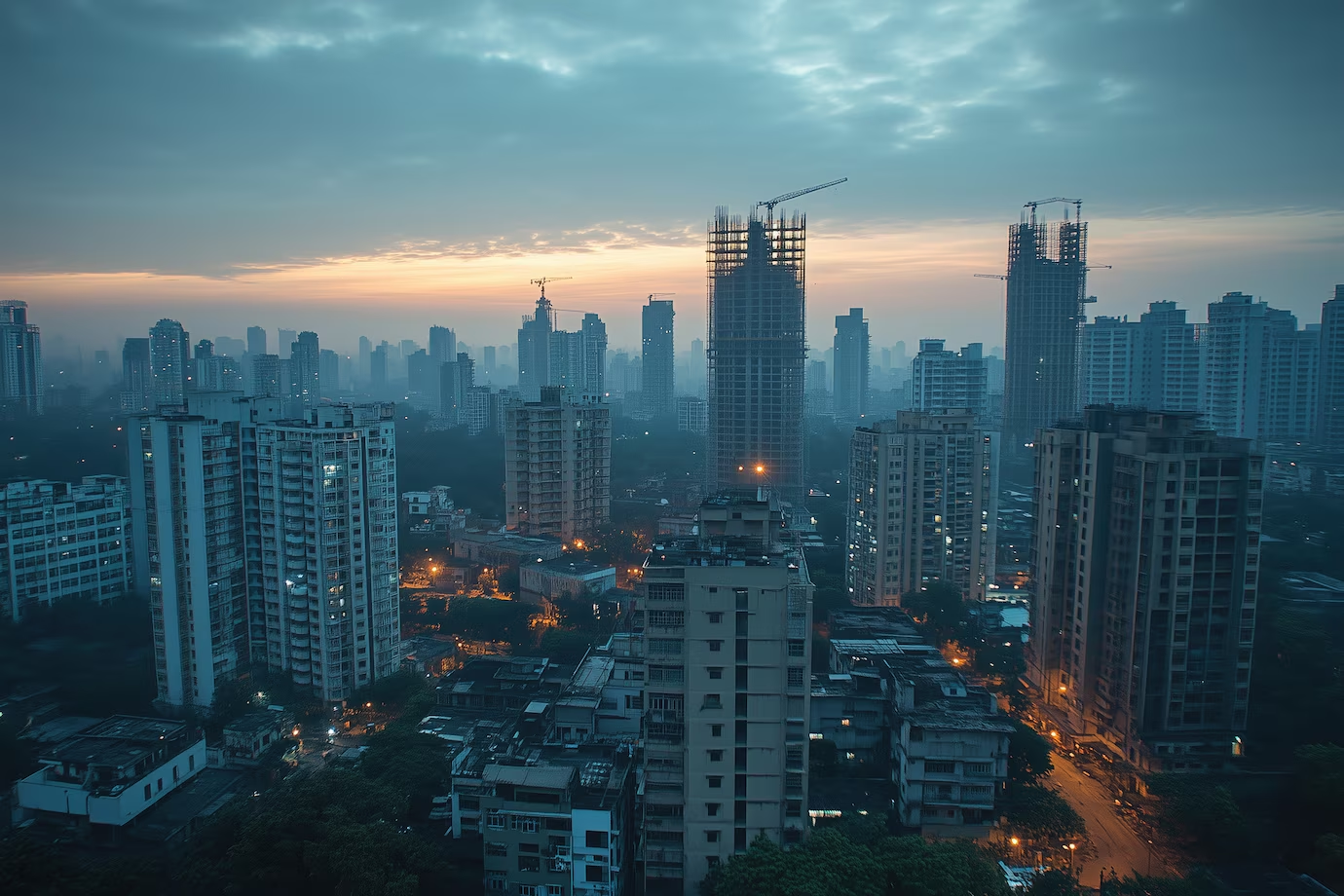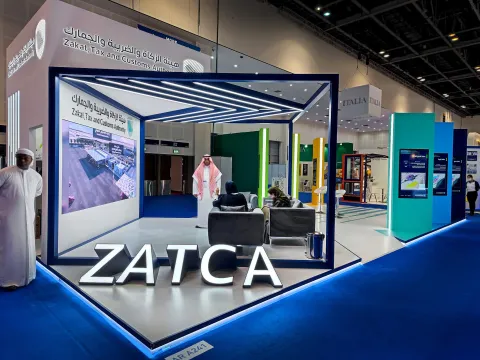This dynamic economic partnership between Saudi Arabia and India is not only a reflection of vibrant bilateral trade but also an emblem of the strengthening ties that transcend mere commerce. The robust exchange of mineral fuels, oils, and chemical products underscores a mutual reliance on key industries, each benefiting from the other's strengths. This intricate dance of exports and imports epitomizes the symbiotic relationship formed from shared interests and interdependencies.
Beyond economic transactions, these figures herald a promising trajectory for enhanced strategic alliances. The impressive uptick in foreign direct investment between the two nations is a testament to the growing confidence in each other's markets—a monumental stride towards intertwined futures. India's FDI stock in Saudi Arabia escalating from SAR 8.3 billion to SAR 10.3 billion paints a picture not just of economic engagement but also of trust and commitment.
Furthermore, the phenomenal growth of foreign direct investment inflow into Saudi Arabia at a staggering 460.2% in 2023 emphasizes the kingdom's burgeoning appeal as a fertile ground for investment, underscoring the importance of commercial registration in Saudi Arabia as businesses seek to capitalize on this vibrant economic landscape. This development is indicative of the thriving ecosystem that both nations are cultivating, propelling innovation, enriching cross-industry collaboration, and offering unprecedented opportunities for growth.
This confluence of economic prowess and strategic collaboration also promises ripple effects across social and cultural spheres. Through ventures and investments, new channels for dialogue and mutual understanding are emerging, fostering an amalgamation of cultural aspirations and societal progress. Such a robust partnership sets the stage for a future where both nations can leverage their collective strengths, geared towards sustainable development and enhanced global influence.
In light of these statistics, the future prospects for Saudi Arabia-India relations are effulgent with potential. The foundations laid today are but a harbinger of the prosperity and innovation that await both countries as they continue to solidify their alliance. With open minds and shared visions, Saudi Arabia and India stand poised to craft a new narrative of success that resonates far beyond their borders.
Foreign Trade
As this dynamic trade portal between Saudi Arabia and India continues to flourish, these figures exemplify an extraordinary testament to growing cooperation and economic integration. The surplus of SAR 4.8 billion is not merely a balance sheet figure; it signifies a thriving economic collaboration and adaptability to harness mutual benefits.
This positive trade balance supports broader strategic initiatives and highlights the flourishing economic landscape bolstered by diverse sectors. Such trade dynamics encourage not only fiscal growth but also innovation across industries, driving both nations towards amplified competitive advantages on the global stage.
The steady upward trajectory in trade further reflects an intricate understanding between the two countries, fostering an environment ripe for further investment in technology, infrastructure, and human capital. In essence, these numbers are more than just economic indicators; they portray a story of prosperity, shared goals, and robust partnership that together fuel advancements and sustainability.
Moreover, the substantial figures are emblematic of a shared resolve to diversify economic portfolios, reducing reliance on single markets or resource flows. This diversification paves the way for resilient economic strategies, invigorated by technological innovation and transformative cross-border collaborations.
Looking beyond the immediate financial implications, this burgeoning trade relationship generates opportunities for broader cultural intersections and social upliftment. With increased business interactions come the exchange of ideas, fostering a rich tapestry of cultural integration and mutual respect—a critical foundation for achieving sustainable peace and collaboration in an interconnected world.
A continued dedication to nurturing this partnership will surely usher in a new era of success and strategic brilliance for Saudi Arabia and India. Harnessing collective potential and envisioning shared futures will undoubtedly result in a legacy of mutual prosperity that promises to inspire generations to come.
The emergence of this profound economic partnership posits both nations as formidable leaders in shaping a progressive, inclusive global economy. As they strive forward together, Saudi Arabia and India are positioned not only to achieve significant milestones in commerce and industry but also to set a beacon of strategic cooperation and holistic development for the international community to emulate.
Export Trends
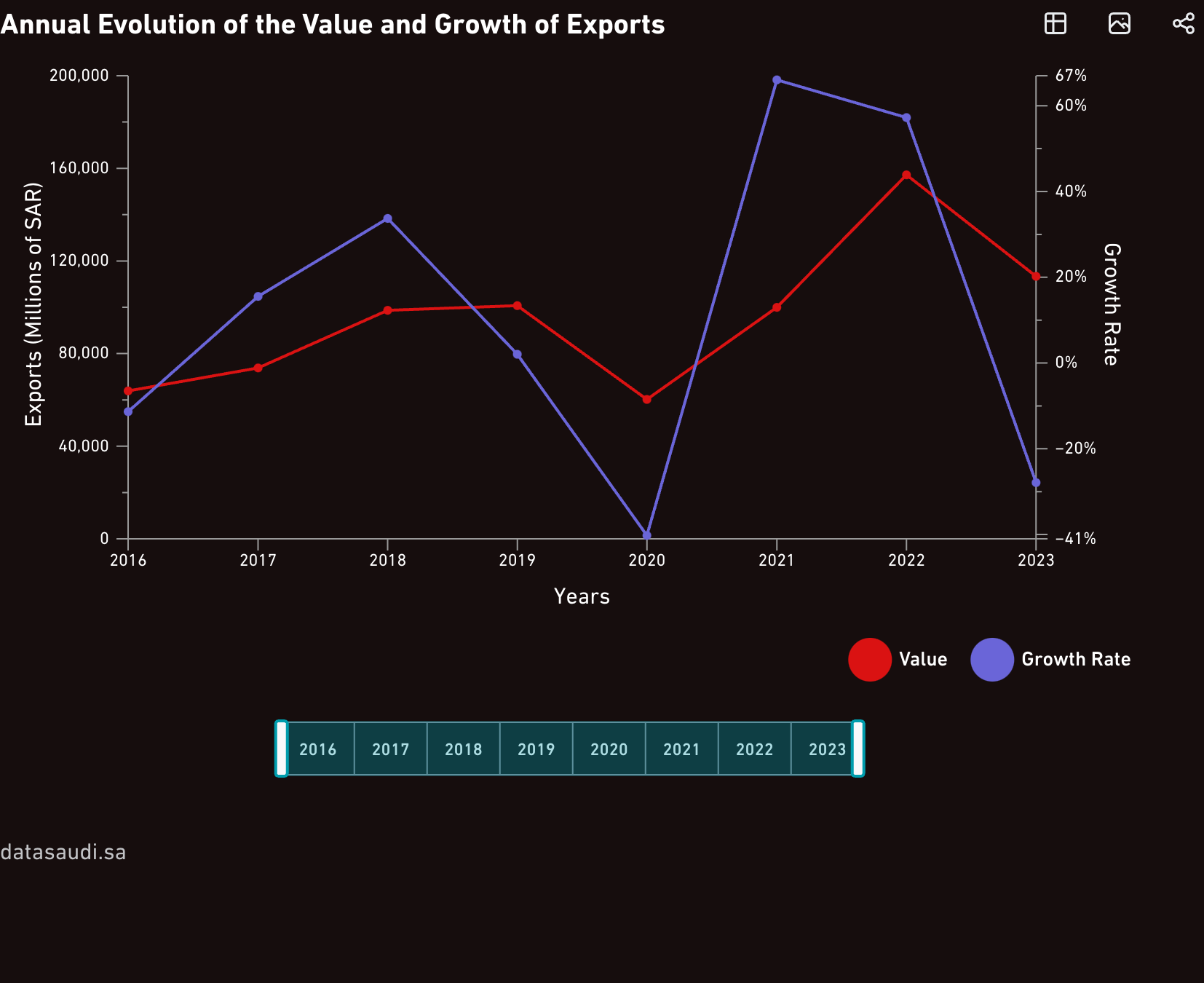
Despite the decrease in export values in 2023, the enduring partnership between Saudi Arabia and India is poised to withstand these shifts and leverage them as opportunities for strategic realignment. Such fluctuations are natural in vibrant economic relationships, serving as reminders of the dynamism inherent in global trade.
This decline, while notable, signals an opportunity for both nations to diversify and innovate within their trade portfolios. It encourages a reevaluation of current strategies, pivoting towards sectors with untapped potential and fostering resilience through diversification. The key for both nations lies in identifying emerging sectors ripe for collaborative exploration, thereby ensuring that future engagements are not just reactive but proactive.
As Saudi Arabia continues to transform its economy through Vision 2030, there lies an unprecedented opportunity for India to enhance its cooperation in sectors like technology, renewable energy, and digital infrastructure. Conversely, India's burgeoning prowess in pharmaceuticals, information technology, and agritech presents compelling avenues for Saudi Arabian involvement, facilitating a bilateral flow of knowledge and resources that fortifies the economic bond.
By harnessing the power of innovation and embracing sustainable practices, both countries can mitigate short-term setbacks while laying the groundwork for long-term growth. The prospect of leveraging artificial intelligence, blockchain technology, and clean energy initiatives holds infinite possibilities for reimagining their trade relations.
Furthermore, as both nations recognize the importance of strengthening non-oil sectors, such as tourism, education, and healthcare, the potential for collaboration in service-oriented fields remains vast and largely untapped. This diversification effort can transform challenges into stepping stones towards more balanced and sustainable economic prosperity.
Significantly, these interactions transcend mere figures—by fostering an environment of openness and adaptability, Saudi Arabia and India are cultivating a relationship built on innovation and forward-thinking. In doing so, they are paving the way for a more inclusive, agile economic dynamic that not only benefits them but also sets an exemplary model for cross-border partnerships globally.
In essence, the export trends illustrate a narrative not of decline, but of transformation and reinvention, where strategic foresight and collaborative ingenuity promise to solidify Saudi Arabia and India as pillars of a new era in global economic leadership. The future of this partnership is indeed bright, full of potential that promises to empower both nations and inspire the world at large.
Exports by Main Section
The export landscape from Saudi Arabia to India in 2023 reveals a captivating mosaic of economic synergy, with total exports reaching an impressive SAR 113.4 billion. This financial testament is clustered predominantly around three principal sectors: mineral fuels, oils, and waxes, accounting for a substantial SAR 90.0 billion, showcasing Saudi Arabia's pivotal role as a key supplier in India's energy matrix. Such critical contributions fortify energy security, laying a strong foundation for sustained industrial growth in both nations.
In parallel, the export of plastics and articles thereof, amounting to SAR 5.0 billion, complements the industrial demands prevalent in India's fast-evolving manufacturing and infrastructure sectors. This segment not only meets immediate material needs but also catalyzes downstream industries, fostering job creation and technological advancements within the subcontinent.
Organic chemicals represent another cornerstone, with exports valued at SAR 4.8 billion. This sector's significance lies in its multifaceted applications across pharmaceuticals, agriculture, and other essential industries in India, reflecting an ongoing commitment to meet the sophisticated demands of a growing economy. This interplay ensures a consistent supply chain, underpinning critical industries with high-quality inputs from a trusted partner.
The distribution of Saudi Arabia's exports to India provides more than just material exchanges—it signifies a deep-rooted partnership offering mutual economic benefits and growth trajectories. As these sectors continue to grow, they present a canvas of opportunities for further refining, innovating, and expanding trade capabilities. By leaning into these core areas, the pathway for collaborative research and development opens up, encouraging each nation to innovate and share sustainable practices that amplify their competitive edges.
Moreover, the evolving trade landscape beckons new sectors to rise as contenders in the bilateral trading arena, such as the digital economy, biotechnology, and sustainable energy solutions, further underscoring the potential for Saudi Arabia company setup to enhance cross-border collaborations. By embracing such diversified prospects, including the potential to open business in Saudi Arabia, Saudi Arabia and India can facilitate a more versatile and resilient economic fabric, paving the way for enduring stability and prosperity.
Ultimately, the section-wise exports reflect not only the current economic exchanges but also a strategic alignment between two dynamic economies. This alignment is driven by a vision for a shared prosperous future—one that holds promise for far-reaching economic development and geopolitical influence—a future where innovation, sustainability, and partnership are at the forefront of their collaborative endeavors. As leaders of economic renaissance in their regions, Saudi Arabia and India are crafting a narrative of success that is bound to inspire nations across the globe to engage in such symbiotic alliances.
Non-Oil Exports
Non-oil exports from Saudi Arabia to India in October 2024 mark a strategic cornerstone in their burgeoning alliance, reaching a notable SAR 2.1 billion. This robust figure underscores the increasing diversification of trade between the two nations, highlighting the vibrant interplay beyond traditional oil-focused commerce. The exportation of products from the chemical and allied industries leading at SAR 1.3 billion signals a dynamic shift towards sectors imbued with potential for growth and innovation.
These chemical goods not only supplement India's burgeoning industrial capabilities but also foster collaborative opportunities in research and development, particularly in areas such as pharmaceuticals, agritech, and specialty chemicals. By capitalizing on these synergies, both nations can fortify their positions as leaders in these pivotal global industries.
Base metals and articles, accounting for SAR 357.2 million, reflect an ongoing enhancement of India's infrastructure and manufacturing sectors, catalyzing technological advancements and job creation. As India accelerates its developmental agenda, the steady supply of base metals from Saudi Arabia becomes instrumental in building sustainable, long-term growth trajectories.
Additionally, the export of plastics and rubber articles valued at SAR 343.3 million complements the needs of India’s diverse industrial landscape, playing a crucial role in sectors ranging from automotive to consumer goods. This segment symbolizes a mutual commitment to innovation and sustainability, particularly in the era of circular economies.
These non-oil exports not only illuminate the depth of economic cooperation but also emphasize a shared commitment to diversification as a means of achieving resilience and adaptability. As both nations continue to expand this non-oil trade frontier, they are poised to redefine economic interdependencies, crafting a robust blueprint for sustainable co-evolution in a rapidly transforming global marketplace.
By focusing on non-oil sectors, Saudi Arabia and India are strategically positioning themselves as influential players in the global economy, promoting a vision that extends beyond mere resource exchanges to include technological, societal, and environmental leadership. The evolution of their trade relationship serves as a beacon, heralding a future of groundbreaking advancements and partnerships that promise to inspire other nations to envision a more interconnected and sustainable world.
Ultimately, the emphasis on non-oil exports encapsulates a broader narrative of collaborative empowerment and shared prosperity. As these exports grow and diversify, both Saudi Arabia and India are laying the groundwork for an enduring legacy of economic excellence and strategic partnership, a legacy destined to fuel generations with inspiration and a collective drive for holistic development.
Import Trends
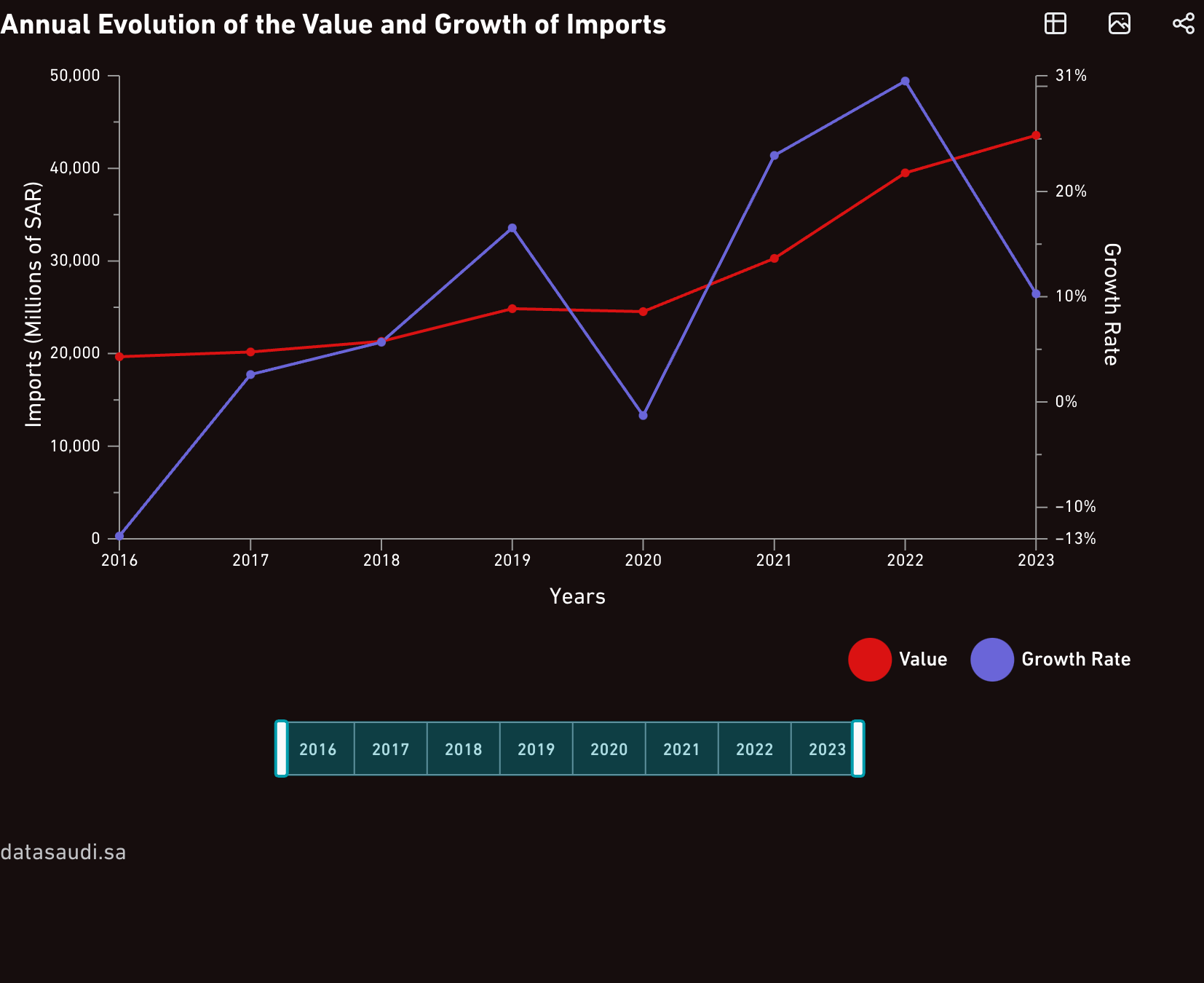
This notable increase in imports from India, reaching SAR 43.6 billion in 2023, epitomizes the resilient and expansive nature of the Saudi-Indian economic partnership. The 10.3% rise demonstrates a harmonious confluence of demand and supply curves, driven by a shared resolve to fortify and expand upon existing trade frameworks.
The detailed graph illuminating these annual fluctuations is not merely a representation of economic data; it reflects a thriving partnership underscored by mutual adaptability and foresight, as seen in the ease of setting up a company in Saudi Arabia to facilitate trade and investment. Such patterns in import trends are a testament to the fluid and responsive nature of this bilateral relationship, poised to adapt and grow amid global economic shifts.
Key categories leading these import trends reinforce India's sterling reputation as a diversified goods supplier, with machinery, electrical equipment, pharmaceuticals, and textiles being in significant demand. This diverse range not only meets the immediate needs of Saudi Arabia's industrial and consumer sectors but also complements the Kingdom's broader Vision 2030 goals by enhancing technological infrastructure and healthcare quality.
The increase in machinery and electrical equipment imports not only fulfills existing infrastructure demands but also addresses the Kingdom's ambitions for futuristic cities and technological hubs. This segment’s growth signals a robust collaboration towards embracing Industry 4.0, where both nations recognize the strategic importance of technological advancement and innovation.
Pharmaceutical imports signify a reinforcing of healthcare ties, embodying a shared commitment to enhanced public health and emergencies preparedness. This exchange promises not only physical products but also opens avenues for intellectual collaboration in medical research and innovation, paving the way for cutting-edge healthcare solutions.
Meanwhile, the textile sector draws on India’s rich craftsmanship and advanced production capabilities to cater to Saudi Arabia's burgeoning consumer markets. This segment reflects the cultural intersection where traditional artistry and contemporary design coalesce, fostering a rich exchange that extends beyond commerce into lifestyle and cultural appreciation.
Stepping beyond economic figures, these burgeoning import trends illustrate a broader narrative of interwoven cultural and economic tapestries. As Saudi Arabia and India continue to nurture this dynamic import relationship, they exemplify a broader vision for global integration and strategic partnership. The burgeoning import sector showcases their commitments to shared prosperity, leveraging each nation’s unique strengths to enhance the other's capabilities.
In sum, this upward trajectory in import trends speaks volumes of a future imbued with strategic foresight and collaborative synergies. As imports continue to rise, Saudi Arabia and India fortify not just their own economic landscapes but champion a model for global partnerships that hinge on mutual growth, respect, and shared aspirations for a brighter tomorrow. As these trends unfold, they bear witness to the transformation of these venerable relationships into pillars of global economic leadership and innovation.
Imports by Main Section
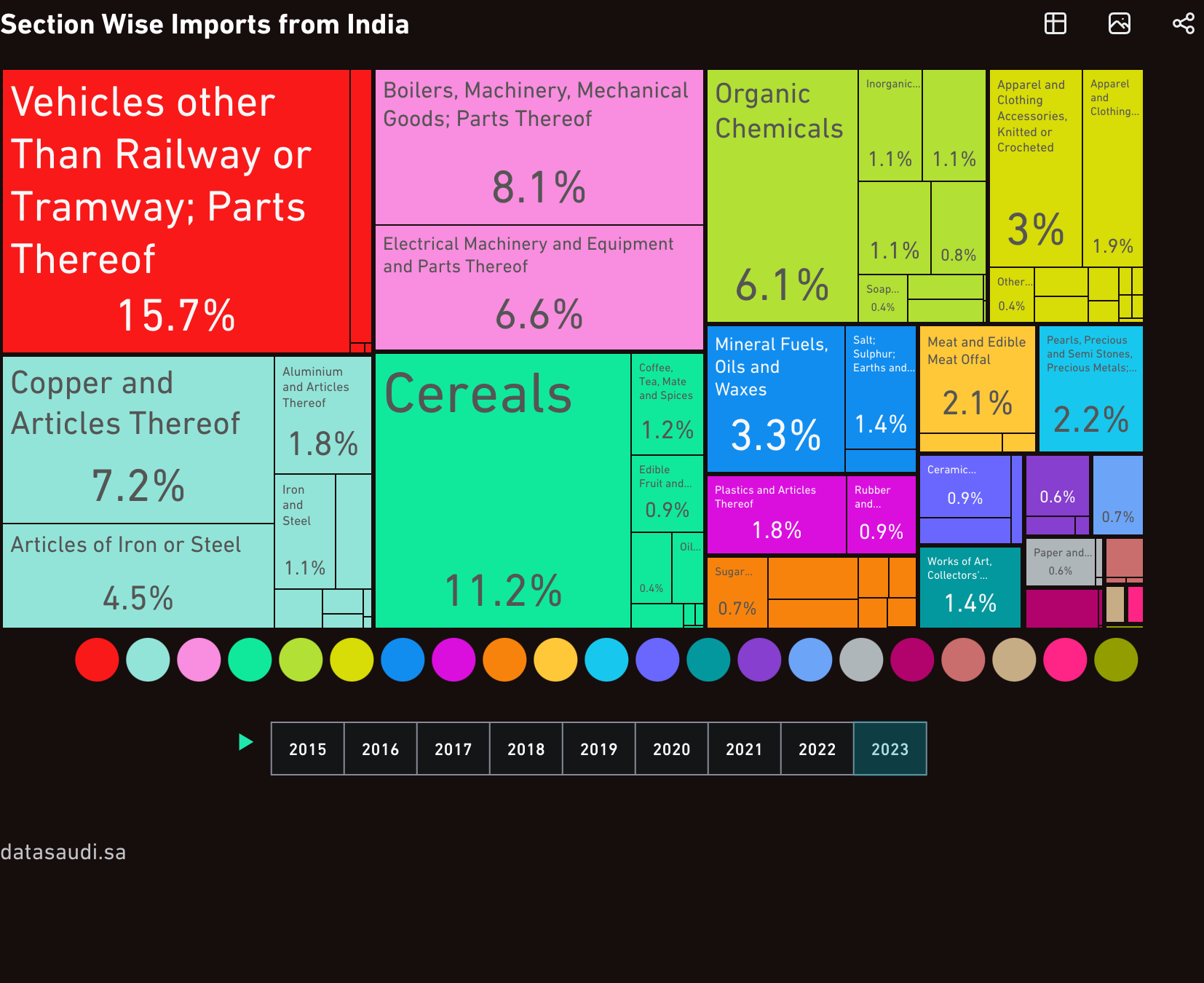
Vehicles, other than railway or tramway, claimed the spotlight in Saudi Arabia's import landscape from India, representing a significant SAR 6.8 billion. This formidable figure underscores the pivotal role these imports play in propelling the Kingdom's burgeoning automotive sector, a critical pillar of modernization and sustainability aligned with Vision 2030. The automotive trade catalyzes the expansion of associated industries, from manufacturing to after-sales services, creating a ripple effect of economic upliftment across the region.
Cereals, valued at SAR 4.9 billion, exemplify the enduring agricultural synergy between India and Saudi Arabia. This essential import not only fulfills nutritional requisites but also underscores the vital interdependence regarding food security, a pressing global challenge. By ensuring a reliable supply chain, these agricultural imports contribute significantly to the domestic food landscape, enhancing resilience in the face of potential global disruptions.
Boilers, machinery, and mechanical goods—amounting to SAR 3.5 billion—further highlight the dynamic industrial collaboration between these two economic giants. Such imports are instruments of transformation, driving technological innovation and infrastructural development within Saudi Arabia. This category illustrates India’s critical contribution to building industrial capacities, facilitating the Kingdom’s ambitions in constructing smart cities and diversifying its industrial paradigms.
The nuanced chart depicting section-wise imports reflects more than just economic transactions; it chronicles a tale of synergistic evolution and shared strategic foresight. Through these foundational exchanges, Saudi Arabia and India are collaboratively weaving a future where both nations leverage their formidable strengths to engender robust economic landscapes.
As these import categories continue to mature and diversify, they reinforce a framework for enduring collaboration. By investing in these multifaceted relationships, both nations are poised to lead innovations in global industrial, agricultural, and technological advancements, setting a benchmark for comprehensive bilateral partnerships worldwide.
With resilience and forward-thinking at the core of their alliance, Saudi Arabia and India exemplify a mutual journey towards economic prosperity and cultural enrichment. Their continued partnership not only enriches their respective landscapes but sets a catalytic precedent for innovative and equitable global collaboration, poised to inspire a more interconnected and sustainable world order.
Foreign Direct Investment
In 2023, the recorded Foreign Direct Investment (FDI) stock from India in Saudi Arabia surged to an impressive SAR 10.3 billion, marking a significant 23.7% increase compared to the previous year. This data illustrates a steadfast and encouraging trend of economic integration and bilateral confidence that bodes well for future prosperity.
The annual evolution captured by the graph is not just a depiction of statistical growth, but a narrative of burgeoning trust and collaborative synergy across borders. This upward momentum holds profound implications for the economic landscape of both nations, hinting at a period rich with promising opportunities for industrial expansion, technological advancement, and strategic innovation.
As Saudi Arabia continues to open its doors to foreign investments, propelled by the ambitious Vision 2030, Indian investors are increasingly viewing the Kingdom as a fertile ground for new ventures in emerging industries—be it technology, renewable energy, or obtaining a business license in Saudi Arabia for infrastructure projects. This investment climate not only attracts fiscal capital but also fosters an exchange of knowledge, cultural insights, and groundbreaking ideas, making opening a business in Saudi Arabia a viable and strategic opportunity that reinforces mutual economic dependencies.
Saudi Arabia's steadfast commitment to creating a welcoming environment for FDI showcases its understanding of the critical role these investments play in economic diversification. By aligning strategies that embrace sectors ripe for innovation such as healthcare, digital infrastructure, and smart city development, Saudi Arabia offers compelling incentives for Indian investors eager to contribute to, and benefit from, this transformative period.
Conversely, India's increasing investment sends a resounding message of confidence in the Kingdom's market, highlighting the opportunity to partake in its growth story while reinforcing ties that extend beyond financial transactions. This strategic infusion from India also reflects a desire for deeper engagement within Saudi Arabia's evolving economic fabric, suggesting an equal commitment to a shared vision for progress.
Such FDI dynamics are more than financial strategies; they represent a beacon for future collaborations taking shape in educational endeavors, joint ventures, and cross-border research initiatives. Both nations, by nurturing these partnerships, emphasize resilience and a forward-thinking ethos crucial to navigating the complexities of the global economy.
The ever-increasing flow of FDI positions Saudi Arabia and India not merely as trade allies but as co-architects of a future where economic development and strategic alliances elevate them as key influencers on the international stage. This trajectory fosters a legacy of empowerment and shared growth—a legacy set to inspire and guide global economic partnerships toward a new era of cooperation and innovation.
As we look to the horizon, this symbiotic relationship serves as a testament to the power of collective foresight and ambition, propelling Saudi Arabia and India forward as paragons of progressive diplomacy and economic stewardship in a rapidly changing world.
FDI Flow
In 2023, the Financial Direct Investment (FDI) landscape between India and Saudi Arabia witnessed remarkable dynamism, reflecting a steadfast commitment to deepening economic ties and shaping an era of collaborative prosperity. The FDI inflow into Saudi Arabia was substantial, reaching a robust SAR 2.1 billion, indicative of increased investor confidence and the vibrant potential residing within the Kingdom's diverse economic sectors. This inflow represents not merely an influx of capital but a strategic alignment towards shared growth and innovation.
In stark comparison, the FDI outflow marked at SAR 111.7 million suggests a strategic refinement of investment ventures abroad by Saudi investors, oriented towards optimizing their global investment portfolios. The resulting FDI net inflow of SAR 2.0 billion—a soaring increase of 780.5% from the prior year—underscores a fundamental shift towards attracting international investment while simultaneously sustaining domestic economic growth.
Visualized within the accompanying graph, this annual evolution of FDI inflow and outflow manifests a gripping narrative of transition and ambition, with the net inflow line standing as a beacon of the burgeoning economic synergy between these two esteemed nations. The progression captured in these numbers is not transient but part of a sustained trajectory toward long-lasting economic interdependence and prosperity.
The FDI net inflow, essentially the balance of inflows over outflows, is emblematic of the primary economic initiatives undertaken to secure a competitive edge in the global marketplace. For Saudi Arabia, this translates into leveraging investments that enhance its Vision 2030 objectives, particularly focusing on nurturing industries poised for innovation, such as tech-driven enterprises, renewable energy solutions, and advanced manufacturing sectors.
As for India, the inflow dynamics into Saudi Arabia present a fertile ground for expanding its economic footprint in the Middle East, encouraging the growth of sectors like pharmaceuticals, information technology, and agritech—all of which are strategic complements to Saudi Arabia's diversification goals. This reciprocal investment dynamic thus paves the way for a cascade of benefits, ranging from job creation and technological transfer to cultural exchanges and regional stabilization.
These robust financial currents between the two nations speak to a profound confidence in each other’s economic resilience and potential. This FDI flow not only signifies robust financial exchanges but encapsulates a profound belief in shared destiny and strategic synergy that underlines the very essence of their partnership.
The path forward is clear: as Saudi Arabia and India continue to cultivate this dynamic investment environment, the promise of creating a thriving, innovative, and inclusive economic landscape becomes increasingly tangible. Such vibrant, bilateral investment exchanges inspire not only regional growth but also set new benchmarks for global economic cooperation.
Looking ahead, this intricately woven tapestry of FDI movements promises not just to reshape the economic landscapes of Saudi Arabia and India but to inspire a broader vision of global leadership driven by innovation, mutual empowerment, and strategic foresight. Indeed, the unfolding story of FDI flows charts a future grounded in collaboration where both nations rise as architects of a new economic order, energizing a world eager for transformational leadership and sustainable growth.
